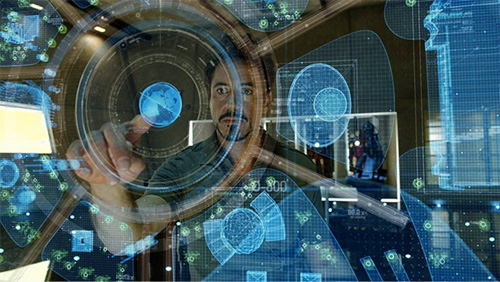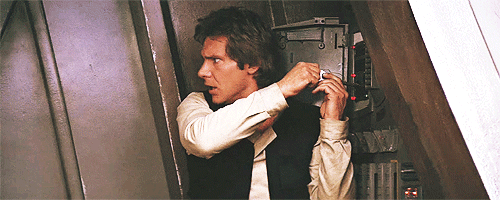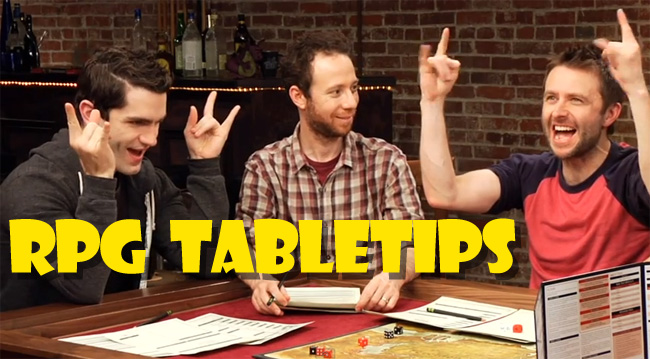Last week I tried to convince you not to run a large party of players for your tabletop RPG game. If you missed it, check it out here.
However, you’ve decided not to break up the party at all – you’re pot committed. Maybe you’re just ambitious, maybe you’re too nice, or maybe you’re crazy (hopefully all three), but by gum you’re going to run a huge party or die trying.
Large parties can be a lot of hectic, crazy fun, but being prepared is the key to making sure the fun/stress equation falls in your favor. Though the game is currently on hiatus (for rest/recovery), I ran a campaign with a huge party with at least some measure of success. Allow me to share what I’ve learned to make your life as a DM a scosche easier.
1.) Don’t Overplan the Story

With 10+ people, you are never going to be able to tell exactly the story, or run exactly the dungeon, that you want. A party that size is a bulldozer – with that many minds mashed together, you are never going to be able to anticipate their decisions. Don’t try to know your plot – instead, know your characters. If you know the motivations behind your NPCs (non-player characters), villains and neutrals and allies alike, then you know how to respond to player action. Know your NPCs personalities, know their resources and what makes them tick, and you’ll know exactly how they’ll react to the party’s wacky decisions.
Example: My large-party campaign is called “Flux-Moire,” and it’s centered on the eponymous city which sits on the “bottom” of all the dimensions, so to speak. It collects all the lost items and people from the multi-verse into one crazy place. It’s essentially a fun excuse to indulge my Edward Nigma-like mental disorder that compels me to include as many veiled references to other stories and characters as I can without being detected. Some of the references (that have been discovered/outed by the players) include Druzil the Imp of Forgotten Realms fame, Date Masemune the legendary Japanese samurai, and the neutrality bar from the movie Constantine. There’s about nine-thousand more hidden in there.
Anyway, at one point, about half the party (let’s call them Jailbirds) had been arrested (due to the circumstances of an earlier session’s fight). They were lounging in the city prison, being interrogated and generally “mua-ha-ha”ed at by the villain who was in control of the city watch. The other half of the party (let’s call them Breakers) was outside the prison.

Now, I assumed the Breakers would want to bust out the Jailbirds, and the Jailbirds would be trying to escape. I knew the capabilities of the villain who was inside the prison, and I knew that he’d have the entire city guard at his disposal. Other than that, I had no idea how the session was going to go when I started it. The players have a lot of allies in the city, and no dearth of resources. All eleven or so of them are also very powerful, which makes predicting what would happen doubly difficult.
The night could turn into a siege, a hostage negotiation, a political drama (pulling strings to get their friends out), a stealth mission (sneaking in), a disguise/deep-cover drama (getting guard uniforms), a trojan horse (getting arrested on purpose), or they could’ve consulted a wizard friend and tried to walk into the prison through the ethereal plane or something equally wacky. Heck, the Jailbirds could have negotiated with the villain and “joined his team” as double agents, or actually taken his deal for real and joined the villain side!
You want to know how I planned the story that night?
I didn’t. Not even a little bit. There was some fun hallucinatory stuff in the beginning of the session, but after that, it was up to the players. Both groups had a goal (really the same goal, just at different angles), and the tools at their disposal.
A supercomputer couldn’t calculate what would happen that night, so why should I even try? The short answer is, you shouldn’t. You’ll end up eating your own pants if you do. Create scenarios for your players, and let them go for it. With a large party, it’s one-hundred-percent necessary. How did I pull off this tricky session? Well . . .
2.) DO Overplan Your World

Your setting and your NPC characters are the only anchor you’re going to have in a shifting sea of story and player whim. Make sure to flush them out. You’re going to be managing so many things at once during the game that you can’t be referring to your notes every five seconds about whether or not the city the PCs are in allows weapons on the street. Or if the sea-witch is vulnerable to silver. Or where the hell the main villain is and what he’s up to.
These are the main things you need fully flushed out: the primary antagonists (including goals, ethics, background, and capabilities both physical and political), the primary allies of the PCs (and their capabilities/etc), the laws of the land (legislative, magical, ecumenical – know these because players will break them), your setting’s “theme” (the mood you’re trying to convey), and at least a little physical geography. You don’t need to have the whole world mapped out from hamlet to hemisphere, but at least know the major political factions, big cities, and what wars/conflicts are going on.
Once you have these ready and semi-internalized, the only thing you need to deal with the changing landscape of player decision is simple cause and effect. Is your villain overly proud? Well then you’ll know exactly how he’ll respond to the players, say, blowing up his statue. Is he straight-forward or more sneaky? A straightforward villain is going to seek out the PCs and attack them himself. A tricky villain may try to poison them, or send assassins. A political villain would try to get them arrested, or discredit them or errode the PCs power base through backdoor deals. A trickster villain may show up and applaud the PCs for knocking him down a peg.

Example: In the “jailbreak” game, the outside “Breaker” players decide to call in all the backup they could muster in the form of ally NPCs. Then they used their connection with the real exiled Sheriff of the town (long story) to find out how to disable some of the prison’s magical defenses. Then, they created a huge distraction out in front of the prison/guard tower with fireworks and smoke. In the confusion, they attacked the prison head on – it managed to be more effective than it sounds, however, because they’d thought to use inside knowledge (the Sheriff’s) to rid themselves of the prisons most formidable defenses.
During the attack, the Breakers ended up killing a bunch of town guardsmen, even though their friend, the real exiled Sheriff, had told them to spare his men. Because I knew the real Sheriff’s reactions to learning his men had been killed, a new plot sprung up.
One of the Jailbirds on the inside used a “gift” I’d forgotten about – a prior friendship with a genie. I know this game is starting to sound like a story Crispin Glover would tell on Letterman, but bare with me. The player summoned his genie friend and just wished the villain away. Now, the player ended up wording the wish in an interesting fashion, so while the villain was gone from that scene, it created another plot down the road.
If I didn’t know my world and characters as well as I did, these crazy decisions would have blown me out of the water. I would have been a nervous wreck trying to put my story back together. As it was, I just had the world change accordingly – there were no story plans to salvage, because they didn’t exist.
3.) No Random Encounters
Throw the idea of random encounters right out the door. Combat in a tabletop RPG is already a sluggish beast – doing it with a party of 10+ will literally consume an entire game session.
Every single combat has to have a distinct point and purpose, or else you’re going to hose all of your game time fighting a pointless band of kobolds that the encounter table told you might be there.
I’ve had huge party combats span across two four-hour sessions, and I am not exaggerating. Players will sometimes have up to AN HOUR BETWEEN TURNS. That’s an entire hour of a player waiting to act again. Imagine a character swings his sword and misses. He’s going to have to wait another 60 minutes to even try to swing again. Players are going to lose patience and interest quickly if the combat itself isn’t stimulating.
So, first, every combat should be a set piece. If you’re unfamiliar with the jargon, a “set piece” is a film term for an amazing bit of spectacle, almost always action-oriented. Don’t make your characters fight an evil wizard in a dungeon throne room. Instead, have your characters fight the evil wizard on a crumbling bridge over an active volcano. Also, add objectives.

Instead of just killing the wizard, maybe the players also have to disable the wizard’s seismic artifact that is causing the volcano to erupt in the first place. Some PCs are fighting minions, throwing them into lava and rolling jump and reflex checks as parts of the bridge plunge into magma. Other PCs are trying to disable the seismic machine while ducking arrows from bow-wielding harpies circling it. Others are battling the wizard directly to take him down for good.
In this way, the entire combat is interesting, even if the PCs only get to act, individually, once an hour. Sure, they’re not doing anything, but they get to watch an amazing death-defying Hollywood action scene while they wait to go.
Second, every combat should in some way push the story forward. After the combat is done, the characters and the story should be in a new place – the King is dead and now there’s a power vacuum, or the real villain is revealed, or an ally betrays them, etc. That way you didn’t sink an entire game session just so the PCs can break some skulls. Each combat should also have its own story, too, something that the other players can follow. A beginning, middle, an end.
Afterward, they shouldn’t say “oh, so we killed some goblins” when summarizing the night. To use the wizard/volcano scenario, they should say, “That was crazy when the wizard appeared next to the machine we were trying to disable. Then he summoned those harpies! And then our ranger Elfyface missed his reflex save and fell off the bridge, but Renee the Sorcerer caught him with a Tensers Floating Disc! Then the wizard offered us all a choice to join him! Then, oh man, our buddy, that dwarf we met, totally took the offer and started fighting us! Then . . .” You get the point.
Give the characters something to do. Give the players something to watch. Change the story when it’s finished.
Stay Tuned
Next week is going to be all about the nitty-gritty of combat – speeding it up, keeping it fun, and making it challenging for tons and tons of characters.

Full Tabletips Series
Previous Article: Managing Party Size
Next Article: Making Combat Fun

